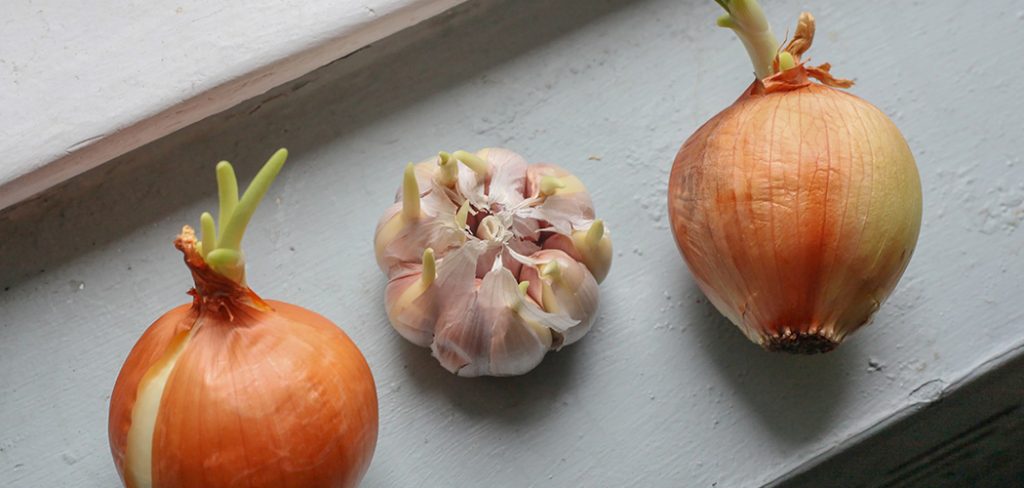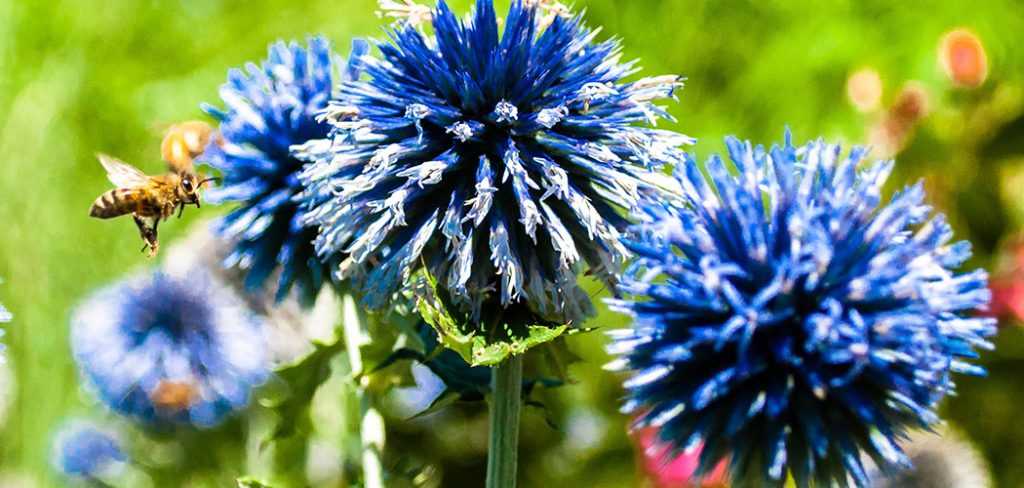So, in addressing the question, “how do kiwis grow?”, we’ll be looking at the different plant stages in a kiwi’s life cycle. And as a bonus, we’ll be listing a few of kiwi’s health benefits for you.
Did you know that kiwis originated from China and were initially known as the “Chinese Gooseberry”? It was the people from New Zealand who called it the kiwifruit that we know today, and they did so because of the fruit’s resemblance to the kiwi bird – rounded body with fuzzy brown feathers.
Kiwis also contain twice more vitamin C content than oranges, and the best part is that they have a low calorie content of 46 calories for every medium-sized fruit. Way to have that guiltless and healthy snack!
They’re mostly eaten raw, but you can also blend them to make healthy smoothies and fruit shakes. Some people also use kiwis in baking cakes and making ice creams. The point is, you can enjoy kiwis in various delicious ways. Yay!
Kiwi Seeds
If you have a kiwi fruit at home, slice it open and then scoop out the seeds using a spoon. Kiwi seeds are those little black ones at the center of the fruit.
After scooping them out, separate the pulp from the seeds using a strainer. Add light pressure to avoid damaging the seeds. Then, run the seeds with a little bit of water just to make sure they’re clean and ready for planting. Lastly, let them dry on a paper towel for about a couple of days.
Get a re-sealable bag and fill it with perlite until halfway through. Make sure your perlite is moist. You can then place the seeds inside by lightly pushing them down. Then, seal the bag and place it inside your fridge for around four months. Make sure that the temperature of your fridge is around 40ºF (4.4ºC).
Check on your bag from time to time and spray it with a little bit of water, as needed, so that it stays moist.
You will need a seedling tray to germinate your kiwi seeds. Fill this tray up to ¾ inch from the top using a potting mix. Lightly pat the soil to even out the surface. Then, sprinkle your kiwi seeds on top of it. Lastly, cover them with a thin layer of potting mix and again, lightly pat them to even out the surface.
Kiwis love a moist (but not soggy!) soil. Spray the surface with water regularly. During this stage of germination, it would be best to cover your seedling tray with plastic wrap to maintain humidity.
It would be best to place the tray somewhere warm so that the seeds would germinate well. After about a month, your seedlings should be ready for transplant.
Growing kiwi
So, how do kiwis grow exactly? Once your seeds develop into seedlings, remove the plastic cover and thin them out to the strongest seedlings. These would have the best chance of growing into a kiwi tree. Transplant your seedlings when they’re large enough to handle.
Find a sunny area in your garden and make sure it’s free from weeds. Then, add a layer of compost that’s about two inches thick to give nutrients to the soil as well as improve its drainage.
Transplant the seedlings near a trellis or fence so that the seedlings have something to climb up on. If you’re planting multiple kiwi seedlings, space them about ten feet apart from each other.
Kiwi plants need to be watered weekly with about an inch of water, and about two inches if the weather is hot. They also love moist soil, so don’t allow them to dry up completely before watering them again. You can use mulch to keep the soil moist and also keep weeds away.
After about a year from transplanting your seedlings, feed your plant with a well-balanced fertilizer. Do this once a year for the succeeding years of your plant’s growth.
Kiwi Flower
There are male and female kiwi plants, and the only way to identify them is through their flowers. In order to produce fruits, you must have both male and female kiwis. A male kiwi flower is colored yellow and has a lot of pollen in the center. Male kiwis are also more vigorous than female ones as their energy is only directed into producing pollen.
Pollinators would get attracted to male kiwis and would then be able to transfer pollen to nearby female kiwi flowers. The female kiwi flower does not have pollen in the center but instead has long stigmas with visible white ovaries at the base. These are the parts that develop into fruit.
If you’re not starting kiwis from seeds, you can purchase male and female seedlings in plant nurseries. There are varieties that are specifically male or female.
Kiwi Fruit Benefits
An average kiwi plant produces fruit around three or four years after being planted. It takes quite some time, but it gives you an abundant harvest. Kiwi fruits grow up to two inches long and they come in dozens.
Here are some kiwi fruit benefits for you. They can help treat asthma because of its high vitamin C and antioxidant content. They also boost the immune system and help improve digestion.
Kiwi fruits can actually reduce the risk of cancer and heart diseases. It also manages blood pressure and reduce blood clotting.
Lastly, it protects against vision loss due to its high lutein content.
Conclusion
Kiwis grow really fast, but they take their time to produce those sweet fruits you love munching on. They’re also not fuzzy and easy to take care of.
They might need occasional pruning to keep the vines in check and to help encourage more growth, but other than that, they’re not very demanding. As long as you give them the right amount of water and sunlight, they should be growing well on their own.
Did you know that kiwi plants can produce fruits for up to 30 years? It’s really a good investment to be planting kiwi in your backyard. It may not give you immediate returns, but it will keep giving you fruits for a long period of time.
Well, that’s about it for “how do kiwis grow?” If you need a little more time deciding whether to plant kiwi or not, just remember that the sooner you start, the sooner you’ll be able to harvest your fruits.
Happy gardening and read my other articles on pawpaw trees and gooseberries.

